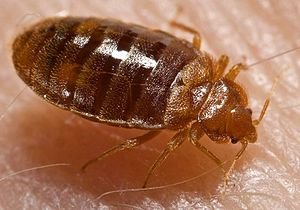
Welcome to “The Ultimate Guide to Preventing Bedbug Infestations.”
We understand that dealing with and preventing bedbug infestations can be a frustrating and stressful experience. In this comprehensive guide, we will provide you with all the information you need to effectively prevent bedbug infestations in your home or business.
You’ll learn valuable tips and strategies on how to keep these unwanted pests at bay. From understanding the importance of early detection to implementing proactive preventive measures, we’ll cover it all. Our article will provide you with a step-by-step approach to safeguarding your sleep environment and ensuring that you are well-equipped to prevent bedbug infestations.
Don’t worry, we’ve got you covered! In this article, you will find in-depth information on each topic, including how to conduct a thorough inspection, the best methods for treating infested areas, and effective ways to prevent future infestations. Additionally, we will address frequently asked questions and provide expert advice on eradicating bedbugs from your life. So, sit back, relax, and get ready to transform your living space into a bedbug-free sanctuary.
The Ultimate Guide to Preventing Bedbug Infestations
Bedbug infestations can be a nightmare to deal with. These tiny insects can quickly multiply and invade your home, causing discomfort, anxiety, and potential health issues. In this comprehensive guide, we will explore everything you need to know about bedbugs, how to identify a infestation, effective prevention methods, treatment options, and more.
Understanding Bedbugs
What are bedbugs
 Bedbugs are small, thin, wingless insects that are primarily active at night, although may be active during the day in dark rooms.
Bedbugs are small, thin, wingless insects that are primarily active at night, although may be active during the day in dark rooms.
They are oval-shaped and reddish-brown in color, similar to an apple seed. Despite their name, bedbugs are not limited to infesting beds or bedrooms.
They can be found in various places throughout a home, including cracks and crevices, furniture, and even electrical outlets.
Physical characteristics of bedbugs
Bedbugs have a flat body, which allows them to hide in tight spaces and crevices. They are typically around 5-7 millimeters in length, but can grow larger after feeding on blood. These pests are expert hitchhikers and can easily move from one location to another by clinging onto clothing, luggage, or other personal items.
Common hiding places for bedbugs
Bedbugs are skilled at hiding in inconspicuous locations during the day. Some of their favorite hiding spots include mattress seams, bed frames, headboards, and furniture upholstery. They can also be found behind wallpaper, in electrical outlets, and in the crevices of baseboards. It’s important to thoroughly inspect these areas if you suspect a bedbug infestation.
Signs of Bedbug Infestations
Visible bedbugs and excrement
One of the most obvious signs of a bedbug infestation is actually seeing the bugs themselves. While they are small, you may be able to spot them with the naked eye, especially during the night when they are most active. Another telltale sign is the presence of bedbug excrement, which appears as small dark spots on bedding, furniture, or walls.
Skin reactions and bites
Bedbugs feed on human blood, typically during the night while you are asleep. Their bites can cause skin reactions such as redness, swelling, and itching. Bedbug bites often appear in a line or cluster on exposed areas of the body, such as the arms, legs, neck, or face. Keep in mind that some people may not have visible reactions to bedbug bites, so other signs should also be considered.
Blood stains and foul odor
As bedbugs feed, they may leave behind blood stains on sheets, pillowcases, or clothing. These stains are typically small, but can accumulate over time. Additionally, bedbugs emit a distinct odor, described as musty or sweet. If you notice an unusual smell in your home, it could be a sign of a bedbug infestation.
The Ultimate Bedbug Identification Guide: How to Spot and Identify Bedbugs
Prevention Methods
Regular cleaning and decluttering
Maintaining cleanliness in your home is crucial for preventing bedbug infestations. Regularly vacuum your floors, furniture, and mattresses to remove any potential hiding spots for bedbugs. It’s also important to declutter your living space, as clutter provides additional hiding places for these pests.
Vacuuming and laundering
To further minimize the risk of bedbug infestations, make it a habit to vacuum your mattress, box spring, and upholstered furniture thoroughly. After vacuuming, immediately dispose of the vacuum bag in a sealed plastic bag and take it outside. Wash your bedding, curtains, and clothing regularly in hot water and dry them on the highest heat setting to kill any potential bedbugs.
Sealing cracks and crevices
Bedbugs can enter your home through small cracks and crevices, so it’s important to seal any potential entry points. Inspect your home for gaps around windows, doors, baseboards, and electrical outlets. Use caulk or another appropriate sealant to fill these gaps, effectively preventing bedbugs from infiltrating your living space.
Preventing Bedbugs while Traveling
Inspecting hotel rooms
When traveling, it’s important to be vigilant and inspect your hotel room for any signs of bedbugs before settling in. Start by examining the mattress seams, headboard, and box spring for any physical presence of bedbugs or their excrement. Also, check behind picture frames, in drawers, and along the edges of furniture. If you notice any signs of infestation, request a different room or consider finding another hotel.
Using bedbug-proof luggage
To prevent bedbugs from hitchhiking on your luggage while traveling, invest in bedbug-proof luggage or use luggage encasements. These specially designed bags have tightly woven fabric that prevents bedbugs from getting inside or escaping if they are already present. After returning from a trip, carefully inspect your luggage and wash your clothes immediately to eliminate any potential bedbugs.
Taking preventive measures upon returning home
Even if you took precautions while traveling, it’s still essential to take preventive measures once you return home to avoid bringing bedbugs into your living space. Thoroughly vacuum your luggage, paying close attention to seams and pockets. Wash all clothing in hot water and dry it on the highest heat setting. If possible, consider leaving your luggage in a garage or basement for a few days to ensure any potential bedbugs die off before bringing the bags into your home.
Bedbug Treatment Options
Professional extermination
If you discover a bedbug infestation in your home, it is recommended to seek professional extermination services. Pest control experts have the knowledge and tools to effectively eliminate bedbugs from your home. They may use a combination of insecticides, heat treatments, and other methods to eradicate the infestation.
Heat treatment
Heat treatments can be a highly effective method for killing bedbugs and their eggs. Professional exterminators use specialized equipment to heat the infested area to a temperature that is lethal to bedbugs. This method can penetrate cracks and crevices, ensuring that all bedbugs are eliminated.
Chemical sprays and powders
Chemical sprays and powders can also be used to treat bedbug infestations. However, it’s important to follow the instructions carefully and use these products safely. Some sprays may need to be applied directly to the infested areas, while others can be used as a preventative measure to deter bedbugs from returning.
DIY Bedbug Prevention
Using mattress encasements
Investing in high-quality mattress encasements can help prevent bedbugs from infesting your mattress. These encasements act as a barrier, preventing bedbugs from entering or escaping. Be sure to choose encasements that are specifically designed to be bedbug-proof and are made of durable materials that cannot be easily torn or penetrated.
Steaming and freezing items
Steam cleaning is an effective way to kill bedbugs and their eggs on surfaces such as mattresses, furniture, and carpets. The high temperature of the steam is lethal to bedbugs, and it can reach deep into crevices that are difficult to treat using other methods. Freezing infested items, such as clothing, pillows, or stuffed animals, can also kill bedbugs if done correctly.
Natural remedies and essential oils
Some individuals prefer to use natural remedies or essential oils to repel bedbugs. While these methods may have some repellent effect, they are generally not as effective as professional treatments. However, using essential oils such as lavender, tea tree, or peppermint can provide a pleasant scent and potentially deter bedbugs.

FAQs about Bedbug Infestations
How do bedbugs infest homes?
Bedbugs can infest homes through various means. They can be brought in through infested furniture, luggage, clothing, or other personal items. They can also enter your home if neighboring units or adjacent dwellings are infested and the bugs find their way through cracks or shared ventilation systems.
Can bedbugs transmit diseases?
Bedbugs are not known to transmit diseases to humans. Their bites can cause discomfort and itching, and some individuals may have allergic reactions. However, the primary concern with bedbug infestations is the psychological distress and disruption they can cause.
How long do bedbug infestations last?
The duration of a bedbug infestation can vary depending on several factors, such as the size of the infestation and the effectiveness of treatment measures. With prompt and effective treatment, bedbug infestations can be eradicated within a few weeks to a few months. However, without intervention, infestations can persist and even worsen over time.
Conclusion
Preventing bedbug infestations requires consistent effort and a proactive approach. By understanding the behavior and characteristics of bedbugs, being vigilant while traveling, implementing effective prevention methods, and seeking professional help when necessary, you can significantly reduce the risk of bedbug infestations in your home.
Remember to regularly inspect your living spaces, maintain cleanliness, and take immediate action if you suspect the presence of these unwanted pests. With these preventive measures in place, you can enjoy a bedbug-free environment and have peace of mind.
